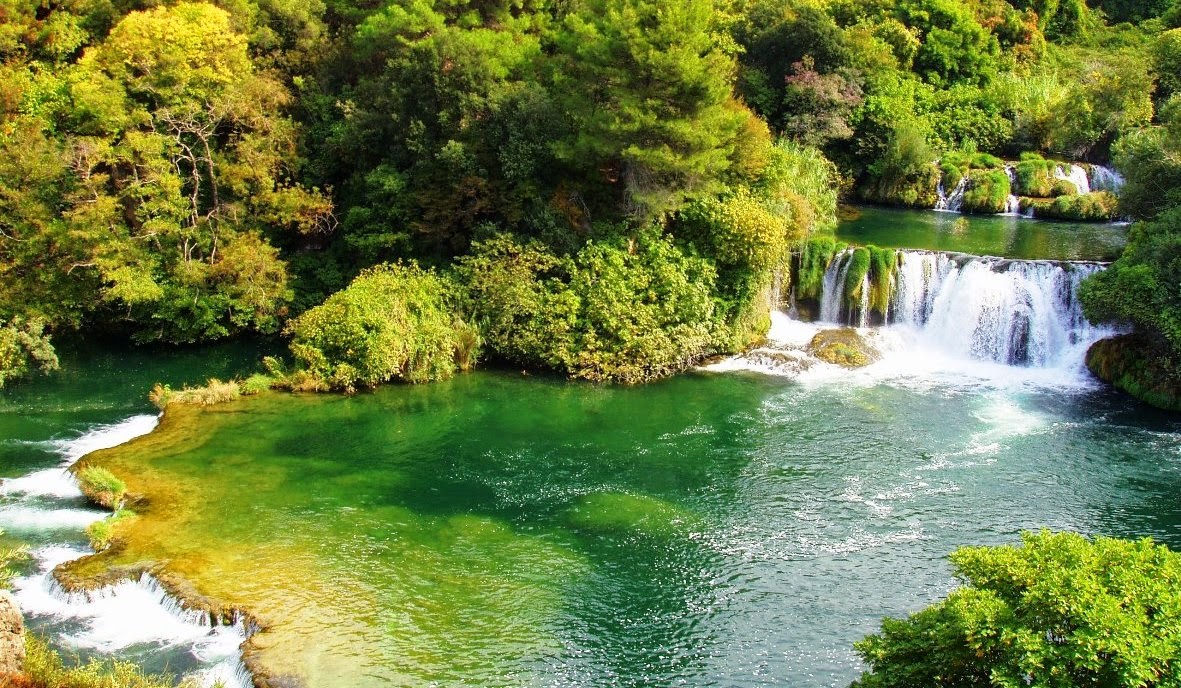There is a tiny island in Croatia
which is causing a sensation between all lovebirds on the planet earth. It is
small and uninhabited island doesn’t have any natural attractions. Galešnjak is also called “Island of Love”, “Lover's
Island”, and “Isle of Love”, is located in the Pašman channel of the Adriatic,
between the islands of Pašman and the town of Turanj on mainland Croatia. The
island is famous due to its naturally occurring heart-shaped objects such as
the Heart Reef in the Whitsundays. The lover’s island has a surface area of
0.132 km2, with its beach measuring 1.55 km in length. It seems many lovers
from around the world consider it the ideal spot for a romantic Day break. The
beautiful heart shaped island features two peaks, the highest of which is 36 m
high above sea level.
The island's unusual shape was
first recorded in the early 19th century by Napoleon's cartographer
Charles-François Beautemps-Beaupré. The island was highlighted on Google Earth
in February 2009, which brought the island to worldwide attention. Therefore,
in the recent times, the activity on the island has created two large scars
across the heart, one spanning the island from a pier on the north to the
south, and the other to the west of it. It has been incredible, and the most
perfect heart-shaped island in the world. Nobody lives there so if lovers
really do want to spend time alone it's the perfect desert island. It looked a
bit like a heart but since it's been on Google Earth everyone else has seen it
too and the whole world seems to want to stay here.
Therefore, couples on honeymoons,
marrieds celebrating anniversaries and young men wanting to propose find
Galešnjak the ideal destination. The island has an aura, a charm which is
almost magical. Galešnjak is privately owned and contains only wild plants and
trees. Human activity recorded on this island is three known Illyrian burial
mounds and remains of an ancient building's foundations. It was included in an
atlas of the Dalmatian coast which was created in 1806. But it was through
Google Earth that Galesnjak first became a global sensation. Galešnjak does not
have any tourist facilities or any sort of man-made structures. All it has are
shrubs upon its rather rocky terrain, wild untamed atmosphere appeals to most
lovers. The island is isolated, quiet and private.
It is the perfect place to relish
a romantic moment uninterrupted. The heart shaped island has some pebble
beaches, the best kept beaches on the planet, but they are good enough for a
romantic swim. Galešnjak is surrounded by the emerald-blue waters of the Pašman
channel; give it an idyllic, paradise-like feel. Hence, due to its beautiful
atmosphere which makes all who visit Galešnjak not wish to leave? However, most
people who travel to Galešnjak cannot stay overnight because of no amenities on
the island. Therefore, the only available option of staying overnight here is
camping. However, many people visit the island set up base in the adjacent
island of Pašman or in the major tourist hub of Zadar. They rent a boat and
ride to the island or take up one of the cruises which make stopovers on the
island. Therefore, Galešnjak is a
must-visit island in Croatia for anyone who desires to share an unforgettable
moment with their soul mate, flawless place to chill out, camp, picnic, swim
and share sentimental moments. As mentioned above, the island is privately
owned hence, permission has to be sought in order to access it.
























































